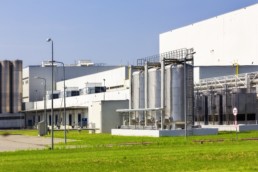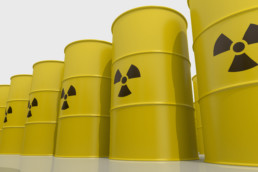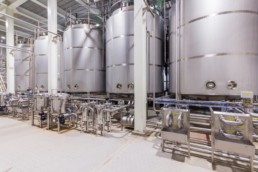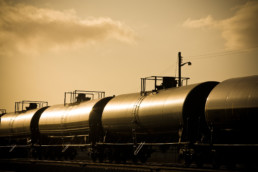Flixborough, 1974. Seveso, 1976. Bhopal, 1984. Pasadena, 1989. Tianjin, 2019. These, as well as countless more, have been the sites of terrible accidents across the history of chemical manufacturing.
In the industrial setting, especially in chemical and petrochemical plants, there is a permanent element of danger surrounding each process taking place, mainly near fluid systems and units. Explosions, fires, and leaks are just a few of the numerous hazards which can rapidly place workers and surroundings in danger, as well as the risk of incompetence and a lack of training, which can further multiply these risks one hundredfold.
And, although safety measures have been developed across the decades, such as fire suppression systems, emergency cooling, isolation valves, and automatic shutdown systems, it is often human behavior that causes the most damage whenever a tragedy is taking place (and let’s not forget that certain safeguards are prone to failure).
For this reason, no matter how many safety measures are in place, it may not be enough – it is necessary for the plant itself to be safer.
“What You Don’t Have, Can’t Leak” – The concepts behind Inherently Safer Design
It was a tragic Saturday afternoon in June of 1974 that would lead to the chemical industry’s need for a shift towards “inherent safety”: the Flixborough accident. A disaster that claimed the lives of 28 workers and injured 36 after the detonation of a flammable cyclohexane cloud, this incident was so destructive that it damaged buildings up to three miles away.
On this day, chemical and industrial engineers in the United Kingdom, Europe, and the world realized that something had to be done when all safeguards failed, and when human workers were not prepared to handle the consequences of an industrial process gone wrong.
It was a matter of making chemical plants inherently safer, ensuring that processes occurred in safer conditions and workers were charged with less responsibilities in terms of preventing disasters – but what did this entail, exactly, and what exactly is inherent safety?
To understand this concept and how it works, we must understand the four categories of chemical safety process strategies:
- Inherent: This approach to chemical plant safety involves the elimination or significant reduction of hazards within the plant, by applying changes in process conditions, chemistries, and technologies used throughout the process, making sure that these cannot be easily changed or bypassed without changing the process or the plant design itself.
For example, the substitution of a flammable solvent for water is an excellent case of an inherent safety strategy: by switching one for the other, you are eliminating the potential of fire, exposure to toxic vapors, and possible contamination of wastewater in one simple step.
- Passive: A strategy that typically revolves around process and equipment design features, passive chemical safety strategies reduce the frequency or consequence of hazardous events taking place.
For example, building blast walls around process equipment can prevent explosions from causing uncontrollable damage to surrounding areas and workers; also, using equipment with higher pressure rating than their processes typically demand can ensure that dangerous spikes in pressure are controlled naturally.
- Active: These strategies require an active response, typically from engineering controls or human operators. Unlike inherent or passive safety strategies, these mostly occur once the event is taking place, and are a safeguard for the plant, its workers, and its surroundings before disasters can occur.
Examples include sprinklers and similar fire suppression systems, pressure relief devices, purging systems, flares, and feed interlocks, which close valves and shut off pumps to prevent overflows.
- Procedural: The final strategy is not actually an engineering control, but instead an administrative control: operating procedures, safety rules and responses, safe work practices, and training are all included in procedural chemical safety strategies.
An excellent example involves the training and responses expected of operators within a plant’s control room, who must always be prepared to take action when abnormally high temperatures or significant change in operational pressure take place.
It is crucial to understand the fact that inherent safety measures are more effective in both cost and response when dealing with hazardous situations within a plant – sensors can fail, blast walls aren’t always enough to contain an explosion, and human behavior can often be erratic and unpredictable – most of the passive, active, and procedural strategies are likely to fail in the face of a catastrophe, making inherent safety measures the best line of protection for a chemical plant.
How ISD saves money and lives through simple modifications
Now that the concepts of ISD have become clear, it is necessary to describe how the idea of an inherently safely designed plant is transformed into a reality.
Inherently safer design is based on four main methods, which all need to be fulfilled if a plant is to be deemed safe. These are to substitute, minimize, moderate, and simplify within the chemical plant, in terms of processes, materials, and technologies.
It is preferable for these four actions to be taken before the plant has entered its conceptual stage, as it is the moment before any commitment has been made to particular technologies or chemistries; it is also a point in which the research and investment efforts have still not been applied. It is a rule of inherently safer design that, as a process moves through the life cycle, the application of ISD is more difficult and expensive.
The four methods of ISD are the following, including examples:
- Substituting: It is crucial that processes involve less hazardous materials, procedures, and chemistries from the beginning, which allows conditions to naturally be safer without changing the products obtained.
An excellent example of this is in the replacement of flammable paints in the plant with water-based paints (and other less soluble ingredients), which not only eliminates the risk of fire, but also protects the environment and plant workers from potential toxic byproducts caused by the vapors released by toxic, solvent-based paints.
In the case of technologies, there may be a debate when purifying water on what type of method to use – although chlorination has toxicity issues of its own, UV light and ozone may not prevent future contamination along the lines of the process. A decision must be made based on these advantages and disadvantages.
- Minimizing: By using smaller batches of necessary hazardous materials and smaller equipment capacities, potential accidents will have smaller effects, and will be easier to control.
This measure becomes clearer in plants which decide to use multiple small batch reactors working in parallel, instead of a single large one; it is also a case of transporting cylinders of toxic gas, such as chlorine, in place of a railroad tank car.
Finally, having a raw material arrive in the plant on demand can be better than storing mass quantities of chemicals within storage tanks.
- Moderating: Where conditions themselves are the hazard, the potential effects of these can be attenuated by diluting, refrigerating, or depressurizing the chemicals within the process.
A process involving a chemical in solid dust form can be mixed with rock dust, allowing concentration to be reduced significantly, and attenuating the potential effects on human health if inhaled. Gases can also be liquefied and refrigerated as liquids instead of gas, reducing their volatility.
- Simplifying: Significantly more focused on technology than chemistry, the simplification method is based on eliminating complexity within the process – a decision which can also help make the process cheaper.
One way to simplify a process involving liquids is to replace the use of pumps for gravity flow, as is using convective cooling in place of heat exchangers. Furthermore, minimizing the number of connections and flanges may help reduce the potential of piping leaks.
“Safer chemistry isn't exclusive to less toxic chemistries, milder effects on human health, or reduced emissions.
It also means keeping plant workers safe, allowing them to be able to return home in good health once they've finished their shift.
The implementation of ISD is the way for this to happen.”
— Ryan Esner, Environmental Fluids CEO
A proven safety measure that is changing the industry
In conclusion, ISD is the way forward for chemical plants looking to protect their assets – including the people working within them – and for companies that are planning to continue protecting the environment from potential danger.
A case study by Dow Chemical at one of their phosgene plants in Portugal demonstrated that, by applying the philosophies of substitute, minimize, moderate and simplify, they were able to dramatically reduce the frequency and size of leaks, reduce their metric inventory from 50 tons to 1 ton (helping eliminate an enormous amount of hazard potential), lowered the risk to the general public by several orders of magnitude, and allowed them to obtain better conversion costs, an improved yield, a reduced maintenance cost, and boosted plant productivity.
In a world where safety and environmental awareness is increasingly important, chemical plants need to follow the philosophies of ISD.




